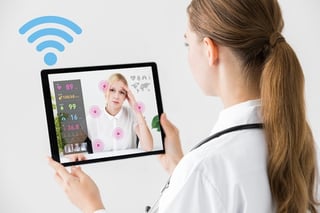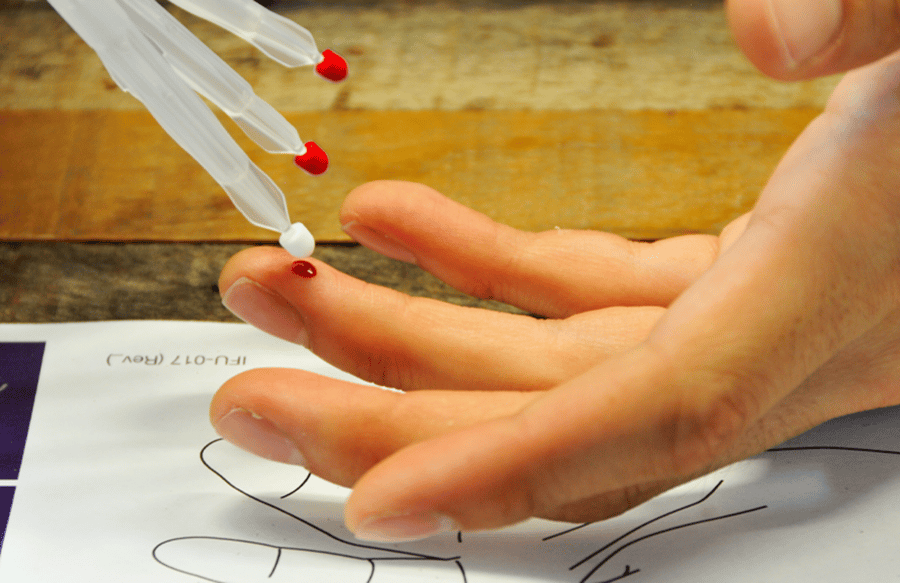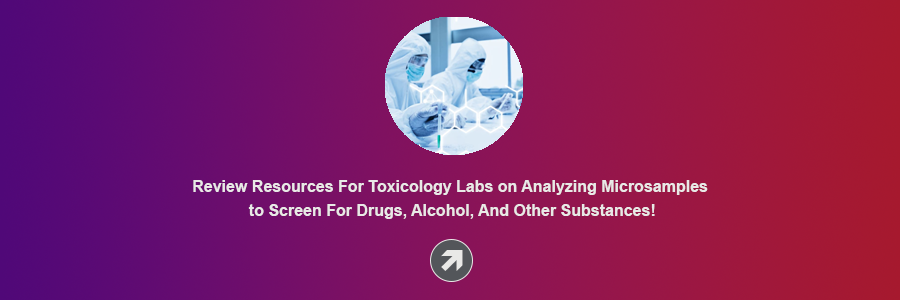Share this
the rise of remote patient monitoring solutions (RPM)
by Neoteryx Microsampling on Dec 14, 2017 6:44:00 AM
 Remote patient monitoring is on the rise as more researchers and technicians, and the clinicians that rely upon them, adopt new technologies that improve the quality of patient care.
Remote patient monitoring is on the rise as more researchers and technicians, and the clinicians that rely upon them, adopt new technologies that improve the quality of patient care.
Remote monitoring of patients encompasses a broad range of approaches, from the use of mobile devices to monitor heart rate and exercise levels to remote blood collection using microsampling.
Benefits of Remote Monitoring
Remote patient monitoring makes many aspects of healthcare less invasive and intrusive for patients. Patients can participate in their care from the comfort and privacy of their own homes.

They have greater agency their treatment, maintain greater stability, and are often happier than those who need to travel to have illnesses and chronic conditions monitored. This type of monitoring can lead to better engagement of patients and improved satisfaction levels, as well as higher oversight of the patient.
The approach is so beneficial for patients, healthcare professionals, and researchers that market intelligence company Transparency Market Research forecasts significant future growth of the field.
A report published in 2014 forecast that the remote patient monitoring market would rise by at least 14 percent between 2014 and 2020. If the forecast holds true, then this market sector will be worth an estimated $1 billion by 2020 after being valued at just $0.38 billion in 2013.
Meeting the Changing Needs of Patients
The rise in conditions such as heart disease, diabetes, and respiratory disease are fueling the need to formulate modern approaches to healthcare and research across the globe.
Crucial remote monitoring devices that are forming part of this leap into the future include heart monitors, body temperature monitors, and hematology monitors.
Of these, it is the ability of patients to collect blood samples in their own homes and to safely send them away for testing that offers the opportunity for further innovations in clinical testing and patient care.
The Role of Microsampling
Remote blood sampling uses microsampling technology, which is easy to use by patients in their homes. Such an approach is less invasive than traditional blood collection and is better suited for small children and those who experience needle anxiety.
From the perspective of those collecting and analyzing samples, this approach provides a reliable and cost-effective collection, shipping, and storage solution, as well as new opportunities to gather stable samples in low-resource regions.
Microsampling is also a field-changing technology that can answer the challenges of the changing remote patient monitoring requirements.

Share this
- Microsampling (204)
- Research, Remote Research (117)
- Venipuncture Alternative (106)
- Clinical Trials, Clinical Research (82)
- Mitra® Device (71)
- Therapeutic Drug Monitoring, TDM (50)
- Dried Blood Spot, DBS (38)
- Biomonitoring, Health, Wellness (31)
- Infectious Disease, Vaccines, COVID-19 (24)
- Decentralized Clinical Trial (DCT) (22)
- Blood Microsampling, Serology (21)
- Omics, Multi-Omics (18)
- Specimen Collection (17)
- Toxicology, Doping, Drug/Alcohol Monitoring, PEth (17)
- hemaPEN® Device (13)
- Preclinical Research, Animal Studies (12)
- Pharmaceuticals, Drug Development (9)
- Harpera® Tool (5)
- Industry News, Microsampling News (5)
- Skin Microsampling, Microbiopsy (5)
- Company Press Release, Product Press Release (4)
- Antibodies, MAbs (3)
- Environmental Toxins, Exposures (1)
- April 2024 (2)
- March 2024 (1)
- February 2024 (2)
- January 2024 (4)
- December 2023 (3)
- November 2023 (3)
- October 2023 (3)
- September 2023 (3)
- July 2023 (3)
- June 2023 (2)
- April 2023 (2)
- March 2023 (2)
- February 2023 (2)
- January 2023 (3)
- December 2022 (2)
- November 2022 (3)
- October 2022 (4)
- September 2022 (3)
- August 2022 (5)
- July 2022 (2)
- June 2022 (2)
- May 2022 (4)
- April 2022 (3)
- March 2022 (3)
- February 2022 (4)
- January 2022 (5)
- December 2021 (3)
- November 2021 (5)
- October 2021 (3)
- September 2021 (3)
- August 2021 (4)
- July 2021 (4)
- June 2021 (4)
- May 2021 (4)
- April 2021 (3)
- March 2021 (5)
- February 2021 (4)
- January 2021 (4)
- December 2020 (3)
- November 2020 (5)
- October 2020 (4)
- September 2020 (3)
- August 2020 (3)
- July 2020 (6)
- June 2020 (4)
- May 2020 (4)
- April 2020 (3)
- March 2020 (6)
- February 2020 (3)
- January 2020 (4)
- December 2019 (5)
- November 2019 (4)
- October 2019 (2)
- September 2019 (4)
- August 2019 (5)
- July 2019 (3)
- June 2019 (7)
- May 2019 (6)
- April 2019 (5)
- March 2019 (6)
- February 2019 (5)
- January 2019 (8)
- December 2018 (3)
- November 2018 (4)
- October 2018 (7)
- September 2018 (6)
- August 2018 (5)
- July 2018 (8)
- June 2018 (6)
- May 2018 (5)
- April 2018 (6)
- March 2018 (4)
- February 2018 (6)
- January 2018 (4)
- December 2017 (2)
- November 2017 (3)
- October 2017 (2)
- September 2017 (4)
- August 2017 (2)
- July 2017 (4)
- June 2017 (5)
- May 2017 (6)
- April 2017 (6)
- March 2017 (5)
- February 2017 (4)
- January 2017 (1)
- July 2016 (3)
- May 2016 (1)
- April 2016 (2)


No Comments Yet
Let us know what you think